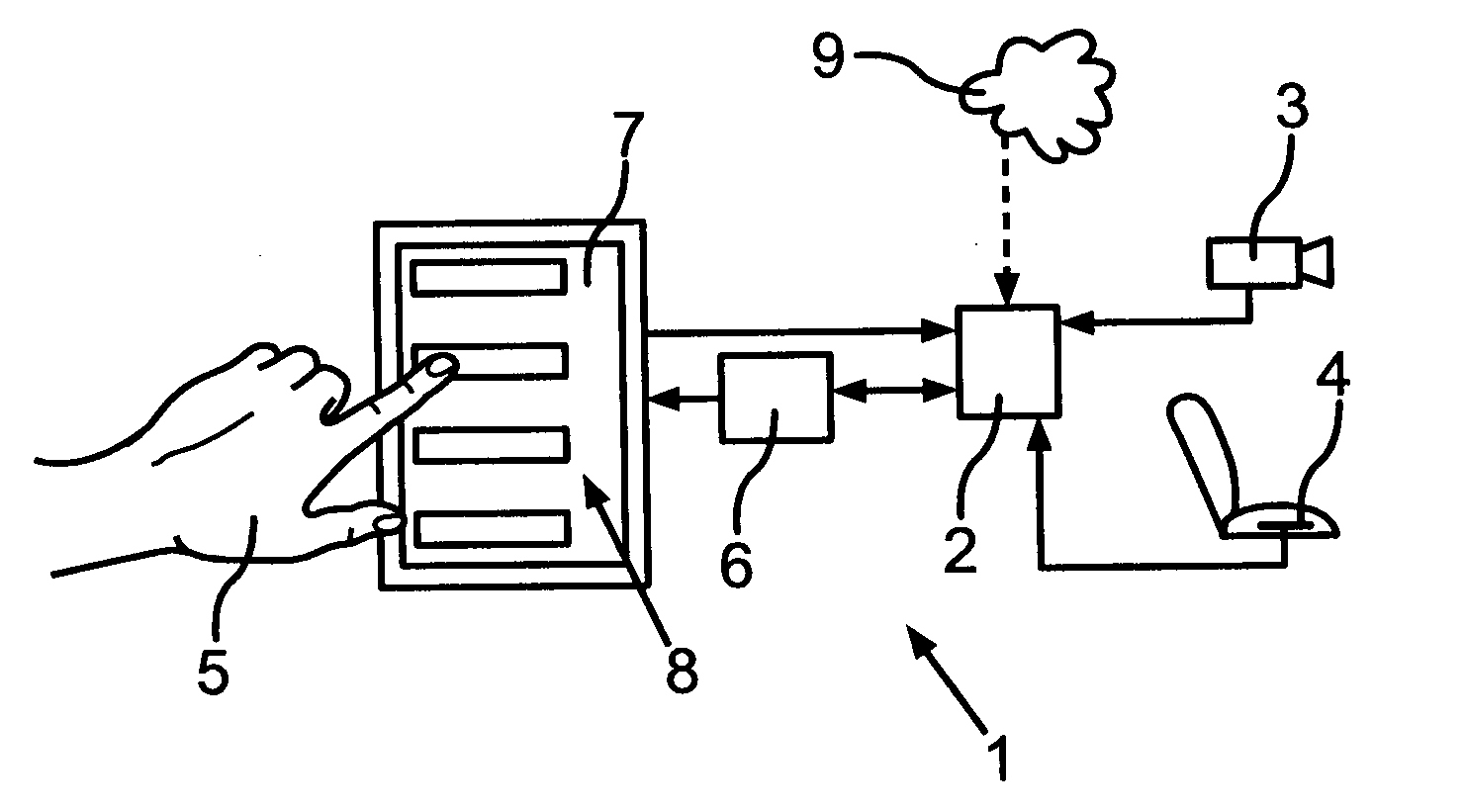Predicting an interface control action of a user with an in-vehicle user interface
a technology of in-vehicle user interface and user interface, which is applied in adaptive control, process and machine control, instruments, etc., can solve the problems of no longer influencing the performance of the ensemble classifier, complicated menus, etc., and achieve the effect of easy selection, ignore or favored for predicting user behavior and quality adjustment of each individual classifier
- Summary
- Abstract
- Description
- Claims
- Application Information
AI Technical Summary
Benefits of technology
Problems solved by technology
Method used
Image
Examples
Embodiment Construction
[0029]FIG. 1 shows an in-vehicle user interface 1 according to an exemplary embodiment of the invention. It comprises a memory unit 2 that collects data from at least one sensor, in the present example a first sensor 3, a camera, and a second sensor 4, a seat sensor. Here, the memory unit 2 also collects data from the cloud 9 via a wireless connection. This wireless connection might not be available all the time. Furthermore, the memory unit 2 collects and stores data that it receives from a display unit 7 about interface control actions of a user 5. A processing unit 6 can access and modify the data stored in the memory unit 2. The processing unit 6 is connected to the display unit 7, which is a touch screen in this example. It also determines at least one most likely interface control action and transmits that information to the display unit 7. The display unit 7 presents to the user 5 a set 8 of the one or more most likely interface control actions so that the at least one most l...
PUM
 Login to view more
Login to view more Abstract
Description
Claims
Application Information
 Login to view more
Login to view more - R&D Engineer
- R&D Manager
- IP Professional
- Industry Leading Data Capabilities
- Powerful AI technology
- Patent DNA Extraction
Browse by: Latest US Patents, China's latest patents, Technical Efficacy Thesaurus, Application Domain, Technology Topic.
© 2024 PatSnap. All rights reserved.Legal|Privacy policy|Modern Slavery Act Transparency Statement|Sitemap


